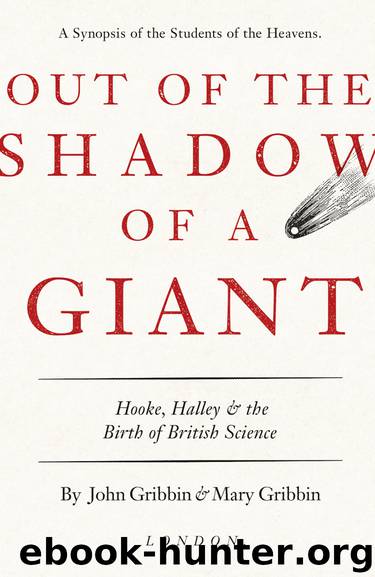Out of the Shadow of a Giant by John Gribbin

Author:John Gribbin [John Gribbin & Mary Gribbin]
Language: eng
Format: epub
Publisher: HarperCollins Publishers
Published: 2017-04-26T16:00:00+00:00
CHAPTER SEVEN
A MISSION OF GRAVITY
The study of gravity was one of the most important scientific missions of Hooke’s life – arguably, the most important mission. Which is why he was so upset when Isaac Newton picked up what Hooke regarded as ‘his’ ball and ran off with it. Hooke experimented with and studied gravity for decades, developing a sound theoretical understanding of what was going on. Then Newton came along and did a few sums that, from Hooke’s point of view, confirmed what Hooke had discovered and were just the icing on the cake; and yet Newton got credit for baking the whole cake. At that time, and with some justification, the mathematical side of science was not so highly regarded as the ideas side; you need ideas, after all, before you can find the appropriate equations, as even Albert Einstein’s investigation of gravity proved. So let’s look at the whole story of gravity from Hooke’s perspective.
Hooke’s interest in gravity went back to his childhood. His early obsession with the possibility of flight – attempting to overcome gravity – was one manifestation of this, and part of his interest in developing spring-driven clocks and watches was because he knew that a pendulum clock would beat time at a different rate in places where the force of gravity was different, such as (he surmised) on top of a mountain. In the early days of the Royal Society, Hooke proposed different ways to measure gravity using falling objects, and carried out experiments with mixed results. In one series of experiments, carried out in 1663, lead weights were dropped from different heights on to one pan of a beam balance, while the other pan, which contained a heavier weight, was held in place by a light spring, to see how much what he called the ‘force’ of the falling object moved the balance. Descartes had argued as a principle that if an object (in physicists’ language, a body) is at rest, then the impact of a smaller body will never move it, no matter how fast the smaller body moves. Hooke showed by experiment that ‘the least body by an acquired celerity may be able to move the greatest’. This was the beginning of an understanding of the idea of conservation of momentum.
The next step was to measure how fast falling objects moved: in places where gravity is weaker, they would be expected to fall more slowly, so this might provide a way to measure how gravity differs from place to place. This required an accurate timekeeper, which Hooke duly built. We don’t have a complete description of it, but the discussion of the experiments and their results reveal that it was a pendulum some 9¾ inches long (roughly 250 mm) which beat once every half-second. By the summer of 1664, Hooke had found that a lead ball starting from rest would drop 15½ feet in the first second of its fall. But these experiments were not followed up, partly because Hooke was
Download
This site does not store any files on its server. We only index and link to content provided by other sites. Please contact the content providers to delete copyright contents if any and email us, we'll remove relevant links or contents immediately.
Hit Refresh by Satya Nadella(9038)
When Breath Becomes Air by Paul Kalanithi(8328)
The Girl Without a Voice by Casey Watson(7821)
A Court of Wings and Ruin by Sarah J. Maas(7651)
Do No Harm Stories of Life, Death and Brain Surgery by Henry Marsh(6890)
Shoe Dog by Phil Knight(5141)
Hunger by Roxane Gay(4869)
The Rules Do Not Apply by Ariel Levy(4861)
A Higher Loyalty: Truth, Lies, and Leadership by James Comey(4843)
Tuesdays with Morrie by Mitch Albom(4690)
Everything Happens for a Reason by Kate Bowler(4678)
The Immortal Life of Henrietta Lacks by Rebecca Skloot(4525)
Millionaire: The Philanderer, Gambler, and Duelist Who Invented Modern Finance by Janet Gleeson(4374)
How to Change Your Mind by Michael Pollan(4292)
All Creatures Great and Small by James Herriot(4232)
The Money Culture by Michael Lewis(4076)
Man and His Symbols by Carl Gustav Jung(4067)
Elon Musk by Ashlee Vance(4028)
Tokyo Vice: An American Reporter on the Police Beat in Japan by Jake Adelstein(3936)
